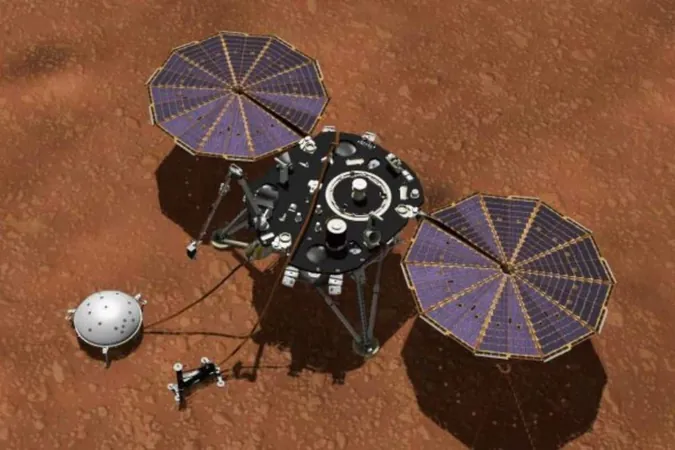
Is There Life on Mars Right Now? Shocking New Seismic Data Revealed!
2025-04-12
Author: Jessica Wong
New Evidence Suggests Liquid Water on Mars!
Exciting news from the Red Planet! A groundbreaking seismic analysis based on NASA’s InSight mission hints that liquid water could be lurking beneath the surface of Mars even today, bringing the tantalizing prospect of microbial life back into the spotlight.
The Science Behind the Discovery
Leading the charge in this discovery are researchers Ikuo Katayama from Hiroshima University and Yuya Akamatsu from the Research Institute for Marine Geodynamics. Their study, published in the journal Geology, delves into seismic waves captured by InSight's SEIS instrument, shedding light on Mars’ hidden layers.
Unlocking the Secrets of Mars' Crust
Launched in 2018, InSight's SEIS (Seismic Experiment for Interior Structure) is a cutting-edge seismometer designed to detect various seismic waves from Marsquakes and meteorite impacts. By analyzing how these waves traverse through Martian materials, researchers can unveil what lies beneath the planet’s surface.
This latest study highlights intriguing shifts in seismic wave velocities at depths of around 10 to 20 kilometers. While earlier studies suggested these changes stemmed from altered porosity or chemical composition, Katayama and Akamatsu propose a bold new angle—liquid water may be the answer!
What This Means for Life on Mars
Katayama asserts, "If liquid water exists on Mars, microbiological activity could be possible." This is a game-changing concept that could transform our understanding of the Martian environment.
The Evidence of Water-Filled Cracks
Research shows that S-waves (which cannot travel through liquid) and P-waves (whose speeds vary with density) exhibit unique patterns that could indicate boundaries between dry and water-filled fractures in Mars' crust.
Experimental Backing Solidifies Hypothesis
To bolster their hypothesis, the researchers conducted lab experiments using diabase rock, similar to Martian crust, under various conditions. The seismic patterns they observed mirrored those detected on Mars, reinforcing the possibility of liquid water below the surface.
Implications for Future Mars Missions
If liquid water does exist today, it completely reshapes how scientists view Mars as a potential habitat for life. Subsurface environments could provide stable habitats, shielding microbial life from the planet's intense surface radiation and freezing temperatures.
A Renewed Hope for Martian Life?
Katayama and Akamatsu's compelling findings contribute to a compelling narrative: Mars may still be geologically and possibly biologically active. If their model is validated, it could pave the way for future robotic missions designed to explore these underground environments in search of extraterrestrial life.
With every new discovery, the mystery of Mars thickens, igniting hopes that we may not be alone in the universe.




 Brasil (PT)
Brasil (PT)
 Canada (EN)
Canada (EN)
 Chile (ES)
Chile (ES)
 Česko (CS)
Česko (CS)
 대한민국 (KO)
대한민국 (KO)
 España (ES)
España (ES)
 France (FR)
France (FR)
 Hong Kong (EN)
Hong Kong (EN)
 Italia (IT)
Italia (IT)
 日本 (JA)
日本 (JA)
 Magyarország (HU)
Magyarország (HU)
 Norge (NO)
Norge (NO)
 Polska (PL)
Polska (PL)
 Schweiz (DE)
Schweiz (DE)
 Singapore (EN)
Singapore (EN)
 Sverige (SV)
Sverige (SV)
 Suomi (FI)
Suomi (FI)
 Türkiye (TR)
Türkiye (TR)
 الإمارات العربية المتحدة (AR)
الإمارات العربية المتحدة (AR)